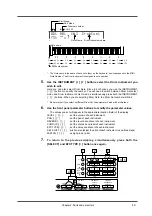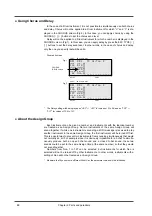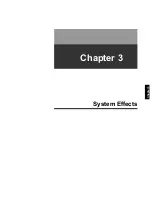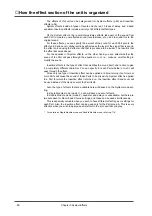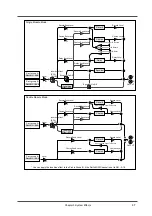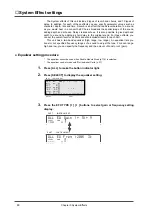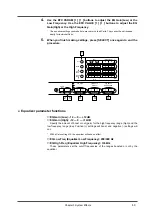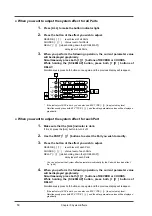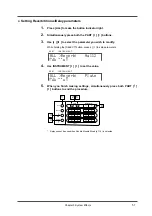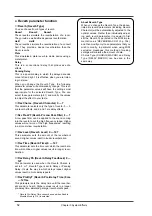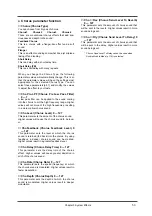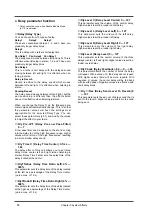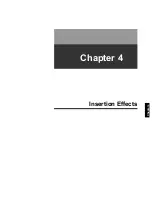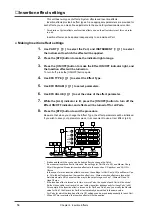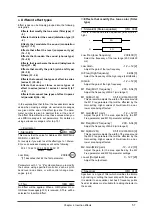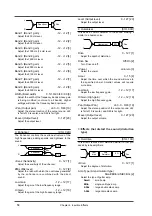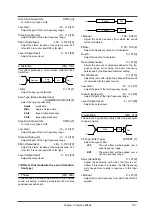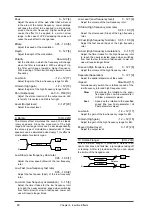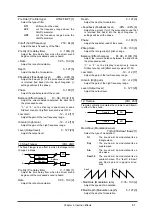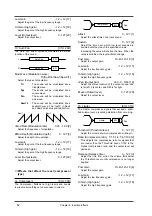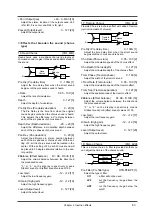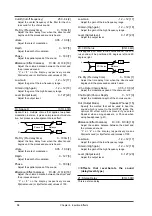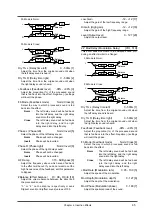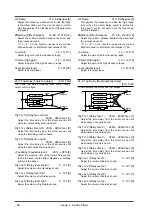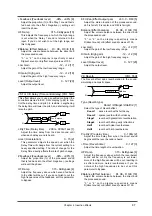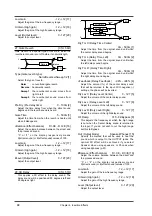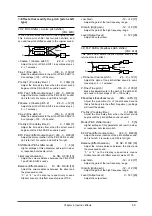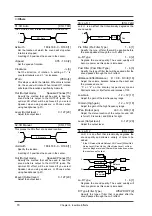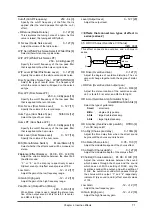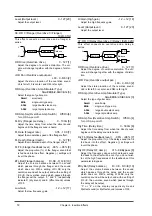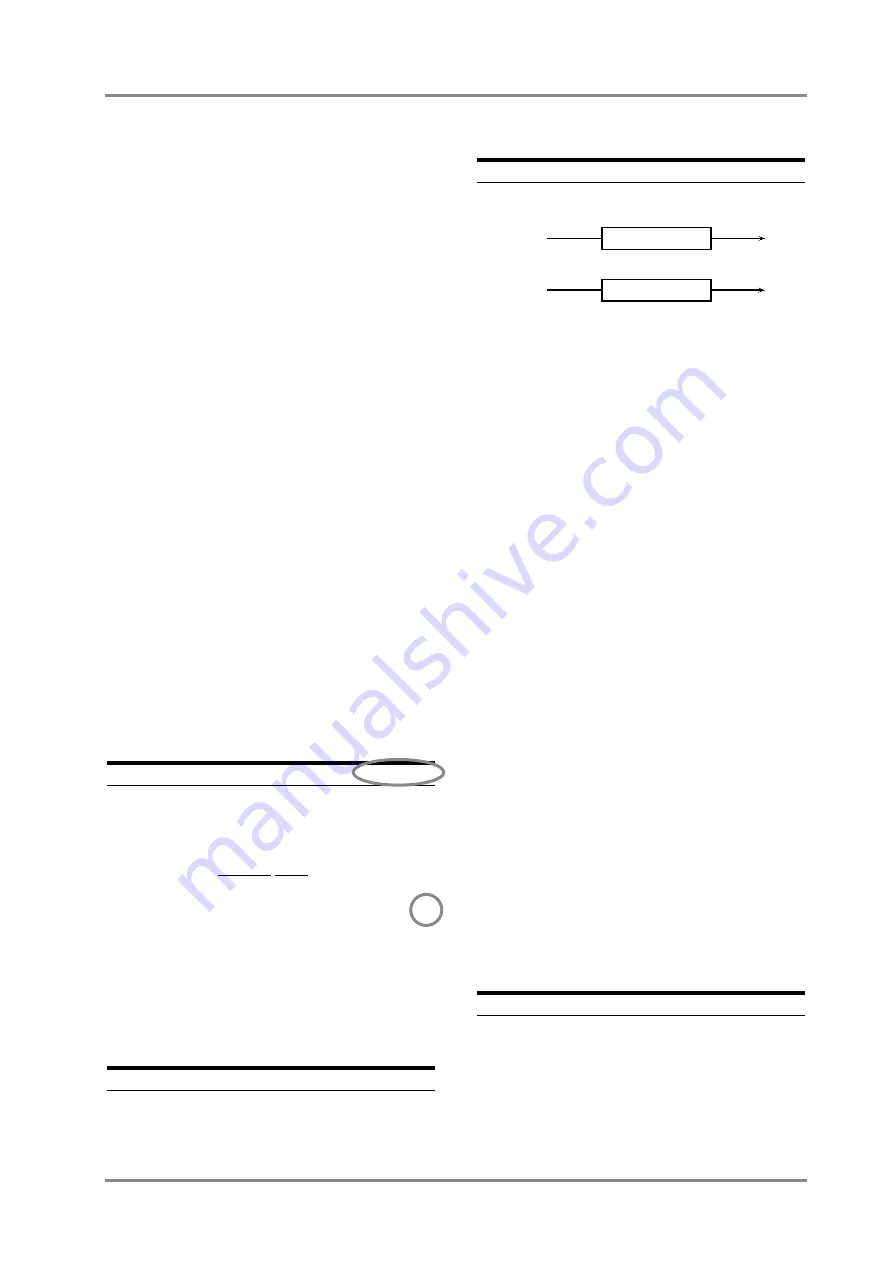
●
Different effect types
Effect types can be broadly grouped into the following
categories.
Effects that modify the tone color (filter type) (1
- 4)
Effects that distort the sound (distortion type) (5
- 6)
Effects that modulate the sound (modulation
type) (7 - 13)
Effects that affect the level (compressor type)
(14 - 15)
Effects that broaden the sound (chorus type)
(16 - 20)
Effects that reverberate the sound (delay/reverb
type) (21 - 28)
Effects that modify the pitch (pitch shift type)
(29 - 30)
Others (31 - 34)
Effects that connect two types of effect in series
(series 2) (35 - 46)
Effects that connect three or more types of
effect in series (series 3 / series 4 / series 5) (47
- 55)
Effects that connect two types of effect in paral-
lel (parallel 2) (56 - 64)
In the explanations that follow, the hexadecimal values
used when making settings via exclusive messages
are given at the end of the effect type line. The para-
meter number is given in decimal form at the end of
the Effect Parameter line. Use these values when you
use MIDI messages to set parameters. For details on
using exclusive messages, refer to p.191.
< Example >
1: Stereo-EQ
[01H, 00H]
This means that the value for Address 40H 03H 00H is
MSB:01H, LSB:00H.
For example, if you wish to set the effect type to 1: Stereo-
EQ, use an exclusive message such as the following:
F0 41 10 42 12 40 03 00 01 00 3C F7
address value
Low Freq
200/400 [1]
“[1]” describes that it's the first parameter.
Parameters with “+” or “#” symbols allow you to modify
their value using specified controller, such as pitch
bend lever and sliders, or with control change mes-
sages. (p.92)
0: Thru
[00H, 00H]
No Effect will be applied. When a GM System On or
GS Reset messages(p.133) is received, 0:Thru will be
selected for Insertion Effect.
❍
Effects that modify the tone color (filter
type)
1: Stereo-EQ (Stereo equalizer)
[01H, 00H]
This is a four-band stereo equalizer (low, mid x 2,
high).
Low Freq (Low frequency)
200/400 [1]
Select the frequency of the low range (200 Hz/400
Hz).
Low Gain
-12 - +12 [2]
Adjust the gain of the low frequency.
Hi Freq (High frequency)
4k/8k [3]
Select the frequency of the high range (4kHz/8kHz).
Hi Gain
-12 - +12 [4]
Adjust the gain of the high frequency.
M1 Freq (Mid 1 frequency)
200 - 6.3k [5]
Adjust the frequency of Mid 1 (mid range1).
M1 Q (Mid 1 Q)
0.5/1.0/2.0/4.0/9.0 [6]
This parameter adjusts the width of the area around
the M1 Freq parameter that will be affected by the
Gain setting. Higher values of Q will result in a nar-
rower area being affected.
M1 Gain (Mid 1 gain)
-12 - +12 [7]
Adjust the gain for the area specified by the M1
Freq parameter and M1 Q parameter settings.
M2 Freq (Mid 2 frequency)
200 - 6.3k [8]
Adjust the frequency of Mid 2 (mid range2).
M2 Q (Mid 2 Q)
0.5/1.0/2.0/4.0/9.0 [9]
This parameter adjusts the width of the area around
the M2 Freq parameter that will be affected by the
Gain setting. Higher values of Q will result in a nar-
rower area being affected.
M2 Gain (Mid 2 gain)
-12 - +12 [10]
Adjust the gain for the area specified by the M2
Freq parameter and M2 Q parameter settings.
+Level (Output level)
0 - 127 [20]
Adjust the output level.
2: Spectrum
[01H, 01H]
Spectrum is a type of filter which modifies the timbre
by boosting or cutting the level at specific frequencies.
It is similar to an equalizer, but has 8 frequency points
fixed at locations most suitable for adding character to
the sound.
L
R
EQ
EQ
Chapter 4. Insertion Effects
57
Summary of Contents for SoundCanvas SC-88 Pro
Page 9: ...Chapter 1 Try out the unit Quick start Chapter 1...
Page 18: ...Chapter 1 Try out the unit 16...
Page 19: ...Chapter 2 Parts and parameters Chapter 2...
Page 47: ...Chapter 3 System Effects Chapter 3...
Page 57: ...Chapter 4 Insertion Effects Chapter 4...
Page 97: ...Chapter 5 Convenient functions Chapter 5...
Page 121: ...Chapter 6 Using the unit with a personal computer Chapter 6...

